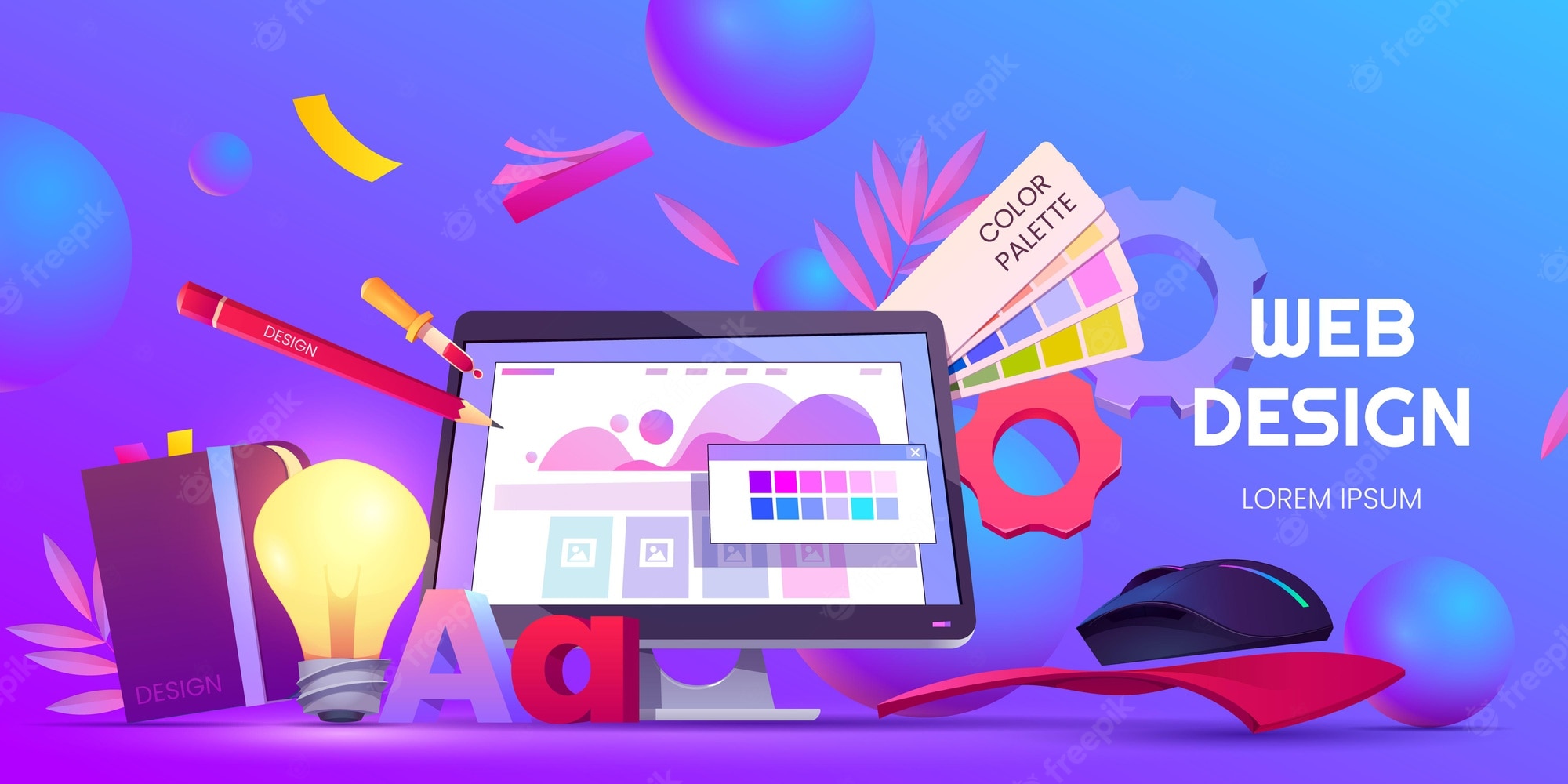How a Web Design Agency uses SEO strategies to boost online visibility
Wiki Article
The Value of User Experience in Effective Web Design Techniques
User experience (UX) works as a cornerstone in effective web design strategies. It forms exactly how users communicate with a site, affecting their complete satisfaction and probability of returning. A well-designed UX can boost engagement with intuitive navigation and receptive formats. Neglecting these facets might lead to irritation and enhanced bounce rates. Comprehending the complexities of UX is important for developers intending to create engaging digital experiences that resonate with diverse target markets. What aspects really drive effective user interaction?Understanding User Experience and Its Influence on Style
Although user experience (UX) is typically perceived as a plain aspect of web design, it basically shapes exactly how users connect with a website. UX encompasses all facets of the user's communication, including use, ease of access, and general complete satisfaction. A positive UX cultivates interaction, encouraging users to explore the website and return in the future. Alternatively, a negative experience can result in aggravation, causing high bounce prices and lost chances for conversion.Layout elements like material, format, and navigating organization play crucial duties in forming this experience. Reliable UX layout anticipates user requirements and choices, ensuring that information is quickly available and aesthetically attractive. Additionally, comprehending user actions via analytics can give valuable insights, educating layout choices that improve usability. Ultimately, a comprehensive understanding of UX permits designers to develop sites that not only bring in customers however likewise promote meaningful communications that line up with business goals and user assumptions.
Secret Concepts of Efficient User Experience
Effective user experience rests on a number of essential principles that improve internet site functionality and interaction. Intuitive navigating style, receptive format basics, and the relevance of visual hierarchy are vital elements that add to a smooth communication in between individuals and web content. Comprehending these concepts allows designers to produce even more easily accessible and straightforward digital atmospheres.User-friendly Navigating Style
When individuals experience a web site, intuitive navigation style works as an important portal to their general experience. Efficient navigation enables individuals to easily find the details they seek, improving their communication with the site. Key concepts include clear labeling, rational company, and consistent placement of navigating elements. Labels ought to be straightforward, allowing users to predict the web content they will certainly locate. A well-structured power structure helps individuals recognize the partnership between various sections, directing them with the internet site seamlessly. Furthermore, receptive menus and easily available web links add to a fluid experience across devices. By prioritizing instinctive navigation, designers can considerably reduce user frustration and rise involvement, ultimately promoting a favorable understanding of the internet site and its web content.Receptive Format Basics
A well-structured navigating system normally causes the demand for a receptive layout, which is vital in today's varied digital landscape. A responsive design guarantees that websites function seamlessly across different devices, consisting of smart devices, desktop computers, and tablets. This flexibility improves user experience by allowing content to be visually systematic and conveniently available, no matter display dimension. Secret principles of receptive style include liquid grids, flexible photos, and media inquiries, which help with ideal watching. Additionally, prioritizing touch-friendly components improves communication on smart phones. By implementing a receptive layout, developers can accommodate users' demands, decrease bounce rates, and increase interaction. Ultimately, a well-executed responsive style promotes a positive user experience, encouraging visitors to check out the web site even more.Aesthetic Power Structure Significance
Visual pecking order plays a necessary duty in assisting users through a web site, making sure that important details records their interest. By tactically making use of size, color, contrast, and spacing, developers can develop a clear path for users to follow. Larger elements commonly attract the eye, indicating their relevance, while contrasting shades can highlight phone call to action. Additionally, constant positioning and group of relevant web content boost understanding, making navigating instinctive. Reliable use aesthetic pecking order not only enhances usability however likewise supports the general aesthetic of the website, fostering a positive user experience. When users can easily recognize one of the most important details, they are most likely to engage with the content, causing boosted fulfillment and interaction with the site.The Role of Functionality in Web Design
Usability plays a vital function in web design, especially via navigation simpleness and adherence to accessibility standards. Reliable navigating improves user contentment by allowing site visitors to locate information rapidly and intuitively. On the other hand, meeting access requirements guarantees that all customers, no matter their abilities, can properly connect with the website.Navigating Simpleness
Simplicity in navigation stands as a keystone of efficient web design, greatly influencing user experience. A structured navigation system enables customers to locate info quickly and intuitively, minimizing irritation and enhancing contentment. Clear labeling and logical structure are important components, assisting customers easily through the internet site. Repetitive web links or extremely intricate food selections can disorient individuals, bring about enhanced bounce rates. Furthermore, mobile responsiveness must be thought about, making certain navigation remains simple across gadgets. Decreasing and focusing on crucial web pages clutter even more supports user interaction. Efficient navigation not only promotes a positive experience but likewise motivates individuals to check out the website extra extensively, inevitably causing greater conversion prices. Hereof, navigating simpleness works as a crucial element in the total effectiveness of web design methods.Availability Specifications
User engagement is significantly enhanced when internet sites comply with availability standards, making sure that all customers, despite their capacities, can navigate and engage effectively. Compliance with these standards not just expands the target market yet also enhances overall user satisfaction. Obtainable style includes attributes such as message options for photos, key-board navigation, and sufficient shade contrast, which facilitate use by individuals with disabilities. Additionally, applying these requirements can favorably affect search engine optimization (SEARCH ENGINE OPTIMIZATION) by improving website structure and quality. As web design develops, focusing on ease of access ends up being important in cultivating a comprehensive electronic environment. By accepting these criteria, designers add to a more fair internet, inevitably driving user loyalty and interaction.Importance of Responsive Style for User Involvement
As customers significantly access sites with a selection of tools, the value of receptive layout becomes vital for involving users successfully. Receptive layout guarantees that a web site adjusts perfectly to different display dimensions, supplying an ideal watching experience regardless of the device utilized. This flexibility improves user engagement by helping with easier navigation and interaction with content.When individuals experience a site that is receptive, they are more probable to stay longer, explore even more, and return in the future. A properly designed receptive format reduces the aggravation typically connected with zooming and scrolling on smaller displays, thus minimizing bounce prices. Furthermore, receptive style can positively impact search engine rankings, as search engines prioritize mobile-friendly sites. In today's digital landscape, where mobile use remains to climb, carrying out responsive design is not just advantageous, but important for maintaining user involvement and assuring a favorable experience across all tools.
Enhancing Load Times for Better User Fulfillment

To enhance load times, web designers ought to focus on optimizing images, leveraging web browser caching, and decreasing HTTP requests. Furthermore, using Material Delivery Networks (CDNs) can expedite content delivery by dispersing it across different geographic locations. Streamlining code, such as compressing CSS and JavaScript data, further contributes to quicker filling rates.
Ultimately, a commitment to enhancing lots times not only increases user contentment yet additionally strengthens brand commitment and boosts the chance of repeat brows through. A swift, smooth experience is crucial for preserving individuals and cultivating favorable communications.
The Impact of Visual Power Structure on User Communication
Aesthetic pecking order acts as a crucial element in leading user communication on an internet site. By organizing material in a way that prioritizes information aesthetically, designers can affect exactly how individuals browse and engage with a website. This hierarchy is developed with different design strategies, including dimension, shade, spacing, and contrast. Bigger fonts or strong shades draw interest to crucial elements, such as calls to activity or headlines, while subdued shades and smaller font styles can indicate subservient info.Reliable visual power structure assists customers rapidly determine what is most important, lowering cognitive lots and improving use. It permits intuitive navigation, making it less complicated for customers to discover what they need without stress. As individuals interact with a website, a well-structured visual hierarchy fosters a much more rewarding experience, inevitably leading to greater engagement and conversion prices. Developers should focus on these concepts to create a effective and user-centered internet atmosphere.
Determining User Experience: Strategies and devices

Often Asked Inquiries
How Can I Improve My Website's User Experience on a Budget?
To boost a site's user experience on a budget, one can enhance web page load rate, streamline navigation, carry out receptive design, improve material clarity, and gather user comments for continual improvements, ensuring a gratifying site visitor experience.What Prevail User Experience Blunders to Stay Clear Of in Web Design?
Common user experience mistakes in web design include cluttered formats, bad navigating, slow-moving filling times, absence of mobile responsiveness, ignoring ease of access, inconsistent branding, and stopping working to focus on user comments - Website Design Agency. Each can Going Here greatly impede general site effectiveness
go to this website
How Typically Should I Update My Web Site for Better User Experience?
Web sites ought to be upgraded routinely, ideally every couple of months, to preserve optimal user experience. Regular updates help address use problems, rejuvenate web content, and adapt to changing user demands, making sure the site remains pertinent and appealing.
Can User Experience Influence SEO Rankings on My Internet site?
User experience can significantly impact SEO positions, as search engines prioritize internet sites that provide smooth navigation, quick filling times, and engaging web content. A positive user experience can result in reduced bounce prices and higher search exposure.What Duty Does Ease Of Access Play in User Experience Style?
Ease of access plays a crucial function in user experience style by making certain that all people, no matter capacities, can navigate and engage with a website efficiently. This inclusivity improves general contentment and interaction among varied users.User experience (UX) is frequently viewed as a plain element of internet design, it essentially shapes exactly how individuals connect with a website. User interaction is substantially improved when internet sites stick to access criteria, ensuring that all users, regardless of their capabilities, can browse and connect efficiently. Gauging user experience (UX) is essential for recognizing how effectively an internet site meets the requirements of its individuals. Additionally, usability screening, where genuine customers browse the website while viewers keep in mind difficulties, supplies direct responses on user experience. Common user experience mistakes in web layout consist of chaotic designs, inadequate navigating, sluggish packing times, lack of mobile responsiveness, ignoring accessibility, irregular branding, and falling short to focus on user comments.
Report this wiki page